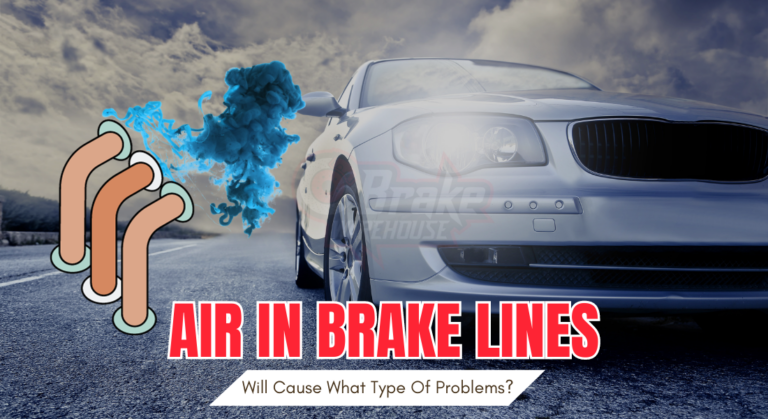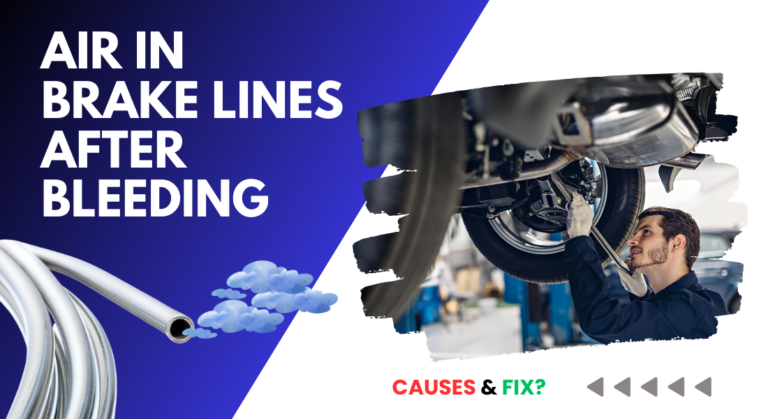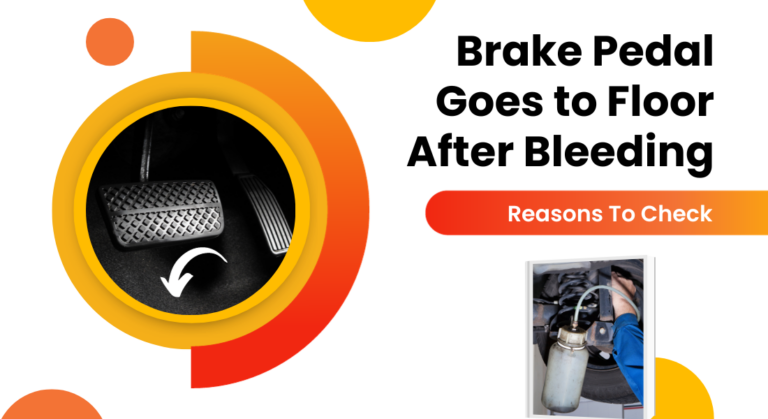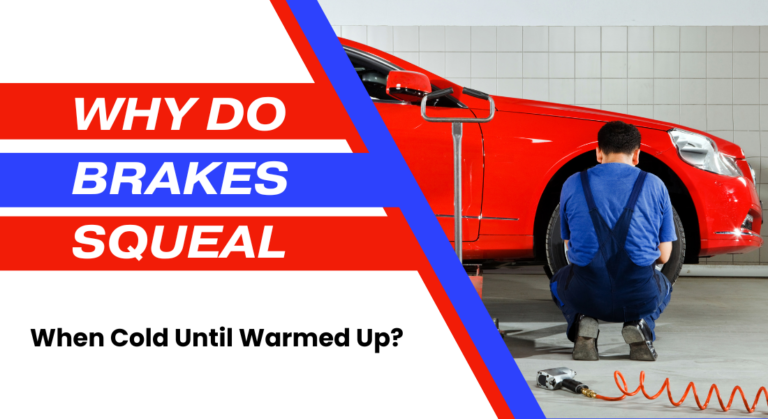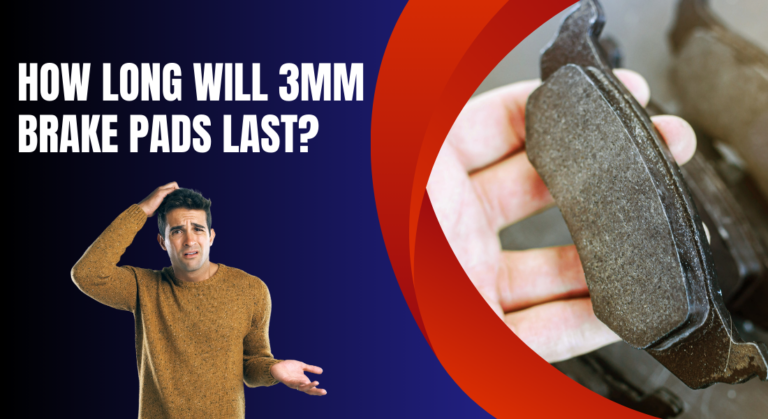Air in Master Cylinder Symptoms – How to Detect & Fix It?
The brake system is one of the most important parts of a vehicle that ensures safety while you are driving. The master cylinder is a key component of the braking system because it generates hydraulic pressure and transfers force from your foot to the brake calipers.
However, the master cylinder can encounter problems over time. One of the most common issues is the presence of air within the cylinder. This problem can cause the brakes to feel spongy, which can be dangerous on the road.
In this article, we will be discussing the various symptoms of air in the master cylinder and what you need to do to address them. So, let’s get started!

Recognizing Air In Master Cylinder Symptoms
The hydraulic system may develop an air pocket if air gets into the master cylinder. Contrary to braking fluid, air is easily compressible, which causes the brake pedal to seem spongy. This might cause the brakes to fail in your car. Other symptoms aside from the spongy brake pedal are:
- Declining braking force
- Greater braking distance
- The pedal pressed all the way down.
Let’s explain the symptoms and how they indicate air in the master cylinder in detail.
Spongy Brake Pedal

When air enters the master cylinder, it typically causes the brake pedal to feel spongy, which can make it seem less than firm when you press it down. This is source, source)due to the nature of air being compressed more easily than brake fluid in the hydraulic system.
As a result, when you apply pressure to the pedal, the air compression reduces the hydraulic pressure and creates an inconsistent, spongy sensation in the pedal.
Read Also: Master Cylinder Failure After Brake Job: The Causes & Fixes
Declining Braking Force

Air inside the master cylinder can cause a reduction in braking power. When the air inside the cylinder heats up from the friction, it can become more compressed, which then reduces the amount of hydraulic pressure in the brake system.
As a result, the brakes may gradually lose their stopping capability and make it more difficult to maintain consistent braking performance.
Greater Braking Distance

Air in the master cylinder can increase the distance required to bring a vehicle to a stop. The air inside the cylinder can be compressed, which reduces the hydraulic pressure that the brakes receive.
With less pressure and force, the brakes may not slow down or stop the car as effectively. As a result, it may take a longer distance to come to a full stop, which could pose a risk to your safety.
Brake Pedal Pressed All The Way Down

When you have air in the master cylinder, you might need to push the brake pedal further than normal to get the desired stopping effect.
The air can interfere with how the hydraulic fluid moves. This interference slows down how quickly the brakes engage and makes it necessary for you to push the pedal to its full extent to achieve the same stopping power.
Read Also: Brake Pedal Goes to Floor After New Master Cylinder – Why?
What Are The Common Factors That Causes Air To Enter The Master Cylinder?
If you are wondering how air can enter the master cylinder even though your car’s braking system is supposed to be airtight, you can check out the common factors and their solutions listed in the table below.
| Common Factors | Explanation | Fix |
| Faulty Brake Line Connections | When brake line connections are damaged, they can create gaps that may allow air to seep into the braking system. | Tightly secure all the brake line connections. |
| Improper Bleeding | When the brake system is bled improperly, air can enter the master cylinder. | Follow the correct bleeding procedure to remove air bubbles from the system. |
| Damaged Master Cylinder | A damaged master cylinder may develop leaks, enabling air to enter the system. | Take your vehicle to a mechanic and replace the faulty master cylinder with a new one. |
| Contaminated Brake Fluid | Brake fluid has hygroscopic properties, which make it susceptible to absorbing moisture or air bubbles. When the temperature of the brake fluid rises, steam can form, causing air to enter the braking system. | Flush the contaminated brake fluid and add high-quality brake fluid. |
| Incorrect Brake Fluid Level | When there is not enough brake fluid in the master cylinder, air can enter the braking system due to low fluid levels. | You should fill the master cylinder reservoir up to the maximum mark with brake fluid. |
| Damaged Reservoir Cap | A loose or damaged reservoir cap can cause air to enter the master cylinder. | Replace the damaged cap and ensure it is properly sealed to prevent air from entering the master cylinder. |
| Worn-out Seals or Gaskets | Over time, the seals and gaskets in the master cylinder can deteriorate, leading to air leaks. This can occur due to normal wear and tear or because of poor seal quality. | Take your car to a mechanic and replace the worn-out seals and gaskets. |
Read Also: Bad Master Cylinder or Air in Brake Lines? Find The Culprit
How Can You Resolve Air In The Master Cylinder Problem?

If you have trapped air in your vehicle’s braking system, it is important to remove the air from the master cylinder and correctly bleed the brake fluid. To help you do this, we have outlined the basic steps on how to remove air from the master cylinder.
Before starting the procedure, you need to gather the following equipment:
- Gloves
- Paper Towel
- An empty container
- Vacuum pump
- Wrench
- Clear plastic tubes
- Brake bleeding kit
Also, seek assistance from one of your friends.
- Step 1: The first step of the process is finding the master cylinder in your vehicle, which is typically located near the firewall on the driver’s side
- Step 2: After that, unscrew the cap of the master cylinder reservoir and check the fluid level. If the fluid level is below the minimum mark, it is too low, and you need to add more brake fluid. When topping up the brake fluid, use a high-quality fluid (Our recommendation).
- Step 3: To start bleeding the brakes, head over to the rear right side of your vehicle and locate the brake bleeder valve on the caliper.
- Step 4: Afterward, attach one end of the transparent plastic hose to the bleeder valve. Then, place the opposite end into a bucket to gather the brake fluid.
- Step 5: Ask your friend to sit in the driver’s seat and slowly apply pressure on the brake pedal.
- Step 6: Use a wrench to take off the bleeder valve. You will notice air bubbles and brake fluid moving through the transparent plastic hose and into the container.
- Step 7: Once all the brake fluid has drained out, firmly close the bleeder valve. You must ensure that the valve is closed before the person helping you removes their foot from the brake pedal.
- Step 8: You should repeat this process until you can see transparent brake fluid moving through the system with no air bubbles in it.
- Step 9: As you bleed the brakes, keep an eye on the cylinder reservoir to make sure it doesn’t run out of fluid. Fill it up with additional brake fluid if required.
- Step 10: Finally, after bleeding the brakes of all four wheels, make sure to refill the master cylinder to the maximum mark. After that, close the cap securely.
You can watch the following YouTube video we have attached below to see a visual demonstration of this process.
FAQs
Check out the FAQs listed below for more information on the symptoms of air in the master cylinder.
How often should I bleed my brakes to prevent air in the master cylinder?
Every two to three years, you should bleed your brakes as preventive maintenance. But it’s essential to take care of any air-related problems as soon as you discover them.
Can I drive my car with air in the master cylinder?
You should not drive your car with air in the master cylinder. Accidents may occur as a result of uncertain stopping distances and lack of control.
Will the air in the master cylinder eventually go away on its own?
Unfortunately, the air in the master cylinder will not disappear on its own, so you will need to bleed the brakes to resolve the problem.
Final Words
The braking system of your car is a very important component that ensures your safety on the road. As a result, you need to make sure your braking system is in excellent shape. Keep an eye out for the typical signs of air in the master cylinder.
According to research, 39% of drivers wait until their car’s brakes begin to fail before having them examined. This can be a serious problem. Therefore, it is highly advised that you take your car to a mechanic if you notice any symptoms of air in the master cylinder.

Meet Zayan, the mechanical genius behind the highly acclaimed brakes problems and solutions website. With over a decade of hands-on experience in the automotive industry, Zayan has become a trusted authority in the realm of brake systems.
His passion for cars, coupled with his expertise in solving complex brake-related issues, has earned him a devoted following of car enthusiasts, mechanics, and everyday drivers seeking reliable guidance.


